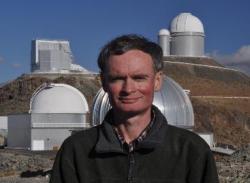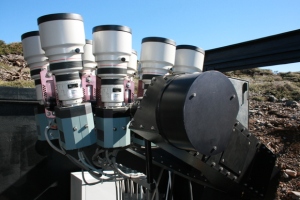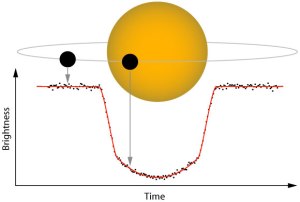The Wide Angle Search for Planets is a collaboration finding exoplanets by the transit method. WASP is the most successful of the ground-based searches for transiting exoplanets, having now found over 150 planets. Only NASA’s Kepler space mission has found more, yet most Kepler planets are around relatively faint stars, which means that WASP dominates the discovery of transiting exoplanet-systems bright enough for the detailed follow-up studies that are crucial to exoplanet science.
The WASP camera arrays scan the night sky every clear night, taking CCD images every minute, building up long-term lightcurves of tens of millions of stars. In the Northern hemisphere the SuperWASP array sited on La Palma is an array of 8 cameras covering 480 degrees of sky with each exposure. WASP-South is a close copy, observing the Southern Hemisphere from Sutherland in South Africa.
Both camera arrays have run since 2006, obtaining 430 billion measurements of 30 million stars. The accumulated lightcurves are searched for “transits”, small dips in the light of a star caused by a planet passing in front and blocking some of the light.
To prove that the dips are caused by a planet we then measure the mass of the object by its gravitational tug on the star, which is seen as a Doppler shift of the star’s spectrum. Candidate stars are observed by our collaborators from the University of Geneva, operating the CORALIE spectrograph on the 1.2-m Swiss-Euler telescope at La Silla Observatory, and the Observatoire de Haute-Provence, who operate the SOPHIE spectrograph. High-quality transit lightcurves of our planets are then obtained with the TRAPPIST robotic photometer operated by the University of Liège.

This site is operated by Prof. Coel Hellier of the Keele University astrophysics group.
Contact us at waspplanets@gmail.com
Keele operates WASP-South and collaborates with the exoplanet group of Warwick University, who operate SuperWASP-North and the WASP data centre. We also collaborate with the St. Andrews University exoplanet team, who created much of the WASP software. We are grateful to the South African Astronomical Observatory, for hosting and supporting WASP-South, and to the Instituto de Astrofísica de Canarias who host SuperWASP-North.



